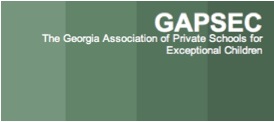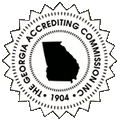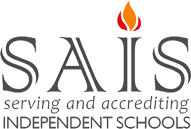Pervasive Developmental Disorders (PDD)
About PDD
Pervasive Developmental Disorders encompasses a group of disorders including Autism, Asperger’s Disorder, and Pervasive Developmental Disorder- Not Otherwise Specified (PPD-NOS).
Autism is a complex, behaviorally defined developmental disorder that begins in early childhood. Although the diagnosis of Autism may not be made until age 3 or later, signs and symptoms may be apparent at 12 to 18 months. Language delay is usually the presenting problem in more severely affected children. Higher functioning children are usually identified later, at age 4 or 5, by their social and behavioral problems. Autism persists throughout the person’s lifetime, although treatment may reduce the symptoms.
The three defining core features of Autism Spectrum disorders are
- Problems with social interactions:
- A tendency to remain aloof; may prefer to be alone
- Limited response or lack of response to verbal cues
- Lack of awareness of the feelings of others and inappropriate expression of emotions, such as crying for no apparent reason
- Difficulty interacting with others and failure to make peer friendships
- Lack of or abnormal social play
- Poor use of body language and nonverbal communication, such as eye contact, facial expressions, and gestures.
- A dislike of being touched or cuddled, and of touching certain types of textures
- Impaired verbal and nonverbal communication:
- Delay in, or the total lack of, the development of spoken language or speech
- If speech is developed, it is often abnormal in content and quality
- Difficulty expressing needs and wants, both verbally and nonverbally
- Repeating words or phrases back when spoken to (echolalia)
- Inability to initiate or sustain conversation
- Absent or poorly developed imaginary play
- A pattern of repetitive behavior with a narrow, restricted repertoire of interests, behaviors, and activities:
- Insistence on following routines and on sameness, with resistance to change
- Ritualistic or compulsive behaviors
- Repetitive body movements (hand flapping, rocking) or abnormal posture (toe walking)
- Sustained odd play
- Preoccupation with parts of objects or a fascination with repetitive movements such as spinning objects, turning lights off and on
- Narrow, restricted interests such as dates on calendars, numbers, weather, or movie credits
Behavioral symptoms may include
- Aggressive or self-injurious behavior
- Noticeable extreme under-activity or over-activity
- Tantrums
- Short attention span
- Abnormal responses to sensory stimuli such as hypersensitivity to touch
- Abnormalities in eating or sleeping
- Inappropriate attachment to objects
- Lack of fear in dangerous situations
- Lack of response to typical teaching methods
There is a wide range of symptoms, severity, and other manifestations of these disorders. A child with significant impairment in all three of the core features listed above is considered to have Autism. A child with similar problems but without delays in language development is usually diagnosed with Asperger’s syndrome.
Individuals with fairly mild symptoms often learn to live independent lives. Others are severely affected and may have accompanying medical conditions such as Fragile X syndrome or low cognitive functioning. As a result, they require lifelong care and supervision.
At Porter Academy
At Porter Academy, we work with students who are diagnosed with high-functioning autism, Asperger’s, or PDD-NOS. As with all of our students, we utilize 1) an individualized developmental approach to identifying areas of concern and remediating those areas for each child, 2) activities that engage the child’s interests, 3) explicit social skills lessons involving social stories, role playing, and classroom discussions, and 4) multi-sensory techniques including the use of visuals to define routines and expectations.
Occupational Therapy provides treatment by remediating the underlying deficits that cause problems in motor skills and sensory processing skills. Sensory integration therapy focuses on normalizing inappropriate reactions to sensory input. It helps the child organize and integrate sensory information for better functioning in a sensory world.
Speech/Language Therapy helps children develop verbal and non-verbal language, including pragmatic language, and learn to appropriately communicate their needs and feelings.
Music Therapy helps children develop a wide variety of skills including auditory processing, rhythm, an understanding of patterns, organization, and an ability to work together with others. Many children with PDD respond positively to music.
Art offers children a nonverbal way to express their thoughts and feelings. It helps develop fine motor skills, tolerance for various types of tactile stimulation, and the ability to organize the steps necessary to create a complex product.
Therapeutic Listening Programs: Various types of listening programs are used to help children improve auditory processing and decrease auditory sensitivity. Integrated Listening Systems (iLs) is offered as a supplemental program at Porter Academy. By listening to modified classical music while doing various visual-motor activities, children improve their processing of vestibular/movement input, increase their auditory processing skills, and improve ocular-motor skills. These benefits then extend to academics for many students because of the significance of the vestibular and visual systems to learning.
Resources for Families of Children with Pervasive Developmental Disorders (PDD)
- TEACCH
- Floortime Atlanta
- Autism Speaks
- Center for Autism
- Autism Society – Greater Georgia
- Spectrum Autism Support Group
- FACES for Kids
- Autism and PDD Support Network
- Powers, Michael D. (2000). Children with Autism: A Parent’s Guide.
- Coplan, James, M.D. (2010). Making Sense of Autistic Spectrum Disorders: Create The Brightest Future For Your Child With The Best Treatment Options.






